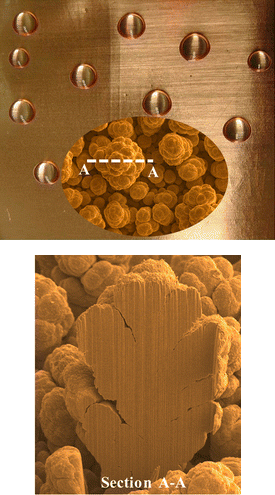Flower's phobia could make future anti-fouling face
 Engineers have once again taken reference from nature to guide new material research, this time emulating the water-repelling effects of a flower’s petals.
Engineers have once again taken reference from nature to guide new material research, this time emulating the water-repelling effects of a flower’s petals.
The hydrophobic characteristics of petals and leaves, known as the “Lotus effect”, helps plants survive in muddy swamps and other areas by repelling dirt and to keep their colourful displays on show.
Now, mechanical engineers have used the same basic structure as the Lotus to develop a new coating for materials that have little to no affinity for water.
Researchers at Virginia Tech have used a two-step technique.
“We produced a low-cost and simple approach for coating metallic surfaces with an enduring superhydrophobic [strong water repellent] film of copper," Ranga Pitchumani, professor of mechanical engineering, explains.
Copper allows for high heat and electrical conductivity, and is the material of choice in many engineering applications such as heat exchangers and electronic circuit boards.
Numerous methods currently exist to produce coating surfaces that for all practical purposes do not get wet, as the water droplets run off the material. Normal approaches include spraying; self-assembly, where molecules spontaneously organize themselves into a structure; and laser etching.
But Pitchumani says the new method “differs in that [the] two-step process is used to directly make superhydrophobic copper coatings without the more costly need for an additional layer of a low surface energy material.”
The two-step process uses a common coating technique called electrodeposition.
Again, the new technique has a special distinction – the difference from previous manufacturing practices is that the Virginia Tech team do not use a template, which can adversely affect the texture of the coating that is deposited on the surface of the material or substrate.
Their template-free process allows the coating material to be made of the same material as the substrate, thereby preserving its thermal and electrical properties.
The possibilities for the technology are quite significant. The coatings can minimise or eliminate ‘fouling’ – dirt and grime accumulation – in heat exchangers, reduce pressure drop in flow through tubes, provide improved corrosion resistance, and mitigate creep failure in electronic printed circuit board applications.
The university currently has an international patent pending, and their latest report has been published in the journal Langmuir.







 Print
Print